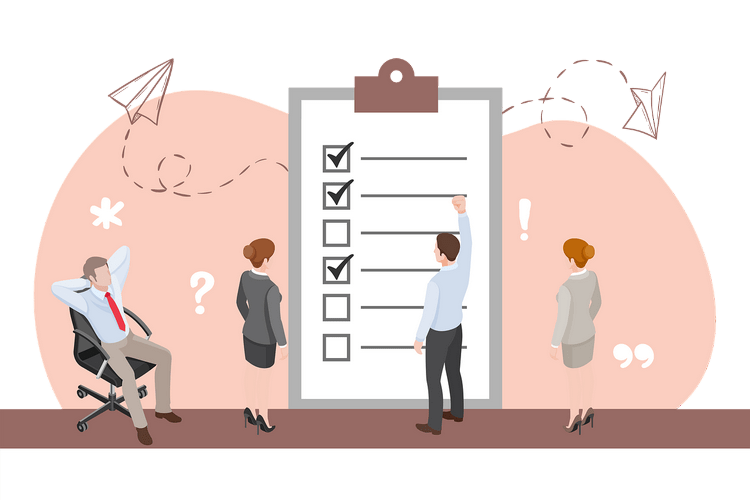How to Choose the Right CRM Software: 5-Step Guide
Define Your Needs: Identify challenges like fragmented data or slow follow-ups. Gather input from your team and list essential features.
Evaluate Features: Look for contact management, pipeline tracking, automation, and analytics. Ensure it supports future growth.
Choose Deployment: Decide between cloud-based (flexible, lower upfront cost) or on-premises (full control, higher initial cost).
Calculate Costs: Include setup, training, and ongoing fees. Measure ROI to ensure value.
Test Before Buying: Trial the system to assess usability, performance, and fit for your team.
Quick Comparison of Cloud vs. On-Premises CRM
| Aspect | Cloud-Based CRM | On-Premises CRM |
|---|---|---|
| Initial Cost | Subscription-based | High upfront investment |
| Maintenance | Handled by vendor | Managed in-house |
| Access | Anywhere with internet | Limited to office/VPN |
| Scalability | Easy to expand | Requires hardware upgrades |
| Data Control | Vendor-managed | Full internal control |
Key Takeaway: A good CRM improves customer relationships, boosts productivity, and drives revenue. Start with your specific needs, evaluate options thoroughly, and always test before committing.
Table of Contents
Step 1: Define Your CRM Requirements
To choose the right CRM, you first need to identify what your business truly needs. Manual processes can eat up valuable time and make managing customer data unnecessarily complicated. By following these steps, you'll create a solid foundation for selecting a CRM system that aligns with your goals.
Identify Current Challenges
Start by pinpointing the issues slowing your team down. Here are some common pain points to consider:
Data Fragmentation: How much time is wasted searching for customer data across multiple platforms?
Pipeline Visibility: Are your sales forecasts accurate, and is your pipeline easy to monitor?
Customer Communication: Are response times lagging? Are follow-ups falling through the cracks?
Reporting Limitations: Can your current tools provide actionable insights from your data?
Collect Input From Your Team
Every department interacts with customers differently, so it's crucial to gather feedback from across your organization. Use input from your team to identify specific CRM requirements, as shown below:
"Setting these concrete targets helps determine what data and functionality the CRM platform must provide to achieve them." [2]
| Department | Key CRM Requirements |
|---|---|
| Sales | Track buyer history, log interactions, manage the sales pipeline |
| Marketing | Monitor campaign responses, segment customers, automate emails |
| Customer Service | Track queries, resolve complaints, manage response times |
Create a Must-Have Features List
Once you've outlined your challenges and gathered team feedback, prioritize the features your CRM must include. Focus on addressing current problems while ensuring the system supports future growth. Here’s a breakdown of essential features:
Core Features
Centralized contact management
Sales pipeline tracking
Task management tools
A unified database for all customer data
Automation Tools
Automatic data entry
Marketing campaign management
Email integration
Automated report generation
Analytics and Reporting
Customizable dashboards
Performance tracking metrics
Customer behavior insights
Tools to measure ROI
As your business grows, your CRM should grow with it. If you're a smaller team, basic features might be enough for now. However, if you're scaling quickly, you'll need a system that can handle more complexity down the road.

Step 2: Review CRM Features and Growth Options
When choosing a CRM, it’s essential to assess features that meet your current needs while leaving room for future growth.
Basic Features
Here are the must-have features that form the foundation of any CRM:
| Feature Category | Key Capabilities | Business Impact |
|---|---|---|
| Contact Management | Customer profiles, interaction history, relationship tracking | Ensures consistent service and reduces the chances of missed opportunities. |
| Pipeline Management | Visual deal tracking, stage monitoring, forecasting | Helps focus on high-priority leads and provides revenue predictions. |
| Communication Tools | Email integration, task management, automated follow-ups | Improves response times and keeps customer engagement on track. |
| Basic Reporting | Performance metrics, sales data, customer insights | Facilitates data-driven decisions and helps identify trends. |
While these features are sufficient for many businesses, teams experiencing growth often need more advanced tools to handle their expanding operations.
Extra Features for Larger Teams
As your business scales, these advanced features become increasingly important:
Workflow Automation
Automating processes like record updates, task assignments, and follow-ups can save time and reduce manual errors.Advanced Analytics
Look for tools that offer:Customer behavior analysis
Predictive sales forecasting
Customizable reports
Performance dashboards
Integration Capabilities
Ensure the CRM connects seamlessly with:Email platforms like Gmail or Outlook
Calendar applications
Marketing automation tools
Customer service software
Check Growth Limits
It’s vital to choose a CRM that scales alongside your business. Here’s what to evaluate:
| Scalability Factor | Scalability Criteria | Why It Matters |
|---|---|---|
| User Capacity | Maximum user seats, pricing tiers | Ensures the system can grow with your team. |
| Data Storage | Storage limits, cost of additional space | Avoids unexpected costs as your data grows. |
| API Access | Integration limits, API call restrictions | Keeps integrations running smoothly as usage increases. |
| Performance | Response times under heavier loads | Prevents slowdowns, ensuring your team stays productive even with higher usage. |
Research indicates that businesses managing over 50 customers typically need a CRM within two years of growth [1]. To avoid disruptions, consider your projected growth over the next 2-3 years and ensure the CRM you select can handle that expansion without requiring a complete overhaul.
Step 3: Compare Setup Types and Support Services
Now that you've outlined your needs and reviewed CRM features, it's time to dive into how deployment methods and vendor support can shape your CRM integration and scalability.
Online vs. Local Installation
Choosing between a cloud-based or on-premises CRM can significantly impact your operations. According to recent data, 87% of businesses now prefer cloud-based solutions [5]. Here's how the two options stack up:
| Aspect | Cloud-Based CRM | On-Premises CRM |
|---|---|---|
| Initial Cost | Monthly subscription per user | Large upfront investment |
| Implementation | Quick setup, minimal IT requirements | Requires dedicated servers and IT team |
| Access | Anywhere with internet access | Limited to office or VPN access |
| Maintenance | Vendor handles updates and security | Managed by in-house IT team |
| Scalability | Easily add users and features | May need hardware upgrades |
| Data Control | Vendor manages data security | Full internal control |
For example, a cloud-based CRM for 10,000 employees might cost $5 per user per month, totaling about $600,000 annually. On the other hand, an on-premises solution could demand a hefty $800,000 upfront with an additional $100,000 in yearly licensing fees [4].
"Cloud computing provides software, databases, servers, and networks over the Internet, enabling access from anywhere." – Salesforce [4]
Once you've weighed the pros and cons of each setup, it's equally important to evaluate the quality of vendor support to ensure a smooth CRM rollout.
Check Support Quality
The level of support your vendor offers can make or break your CRM adoption process.
Support Channels and Availability
Options like phone, email, and live chat
Availability (24/7 versus business hours)
Average response times
Dedicated account management
Training Resources
Video tutorials and comprehensive documentation
Live training sessions for teams
User guides and FAQs for quick answers
Regular webinars to stay updated
"We wanted to build the program to the simplest aspect for our reps… We wanted it to be a simple process, so when they sold the job, regardless if it was a loan or a cash deal, it was simple, fast." – Chris Nelson, Puragain Water's National Sales Manager [3]
For cloud-based solutions, vendor support plays an even bigger role since the provider oversees the entire system. It's a good idea to test their responsiveness by submitting inquiries, asking for detailed product information, exploring training materials, and evaluating how well they handle your requests.
sbb-itb-d2ace5e
Step 4: Calculate Total Costs and Benefits
On average, businesses spend $1,800 per user over five years on CRM systems [6]. Understanding these costs is key to choosing a system that delivers long-term value.
List All Expenses
To get a full picture of CRM costs, you need to evaluate both direct and hidden expenses. Here's a breakdown:
| Cost Category | Direct Costs | Additional Costs |
|---|---|---|
| Initial Setup | • Base system cost • Data migration • Initial training | • Staff overtime • Internal project management time • Hardware upgrades |
| Ongoing | • Monthly subscription fees • Storage costs • Regular maintenance | • Ongoing staff training • Customization needs • Support fees |
| Integration | • Basic API connections • Standard plugins | • Custom integration development • Third-party tool subscriptions |
It's important to note that implementation costs can match the subscription fee, effectively doubling upfront expenses [9]. These fees typically range from $1,200 to $5,000, depending on the project's complexity [9].
When budgeting, keep these potential costs in mind:
Minimum contract terms
Premium features
Data cleansing and migration
Staff training hours
Customization needs
Integration with existing systems
Once you've outlined your expenses, the next step is to measure the financial benefits.

Measure Return on Investment
Calculating your CRM's ROI helps confirm whether the investment is worthwhile. A well-executed CRM system can yield up to 245% ROI [7], and businesses often report a 29% boost in sales revenue after adoption [7].
For example, imagine a company invests $25,000 in CRM software and spends an additional $20,000 on training and maintenance over two years, bringing the total to $45,000. If the CRM generates $120,000 in additional revenue during that time:
Net profit = $120,000 – $45,000 = $75,000
ROI = ($75,000 ÷ $45,000) × 100% = 166.7%
In this scenario, the company earns $1.67 in profit for every dollar spent [7].
CRM returns have also improved over time. The average return per dollar invested rose from $5.60 in 2011 to $8.71 in 2014, reflecting a 38% increase in value [8].
Key metrics to track when evaluating ROI include:
Revenue growth
Cost savings from automation
Enhanced customer retention
Improved team productivity
Reduced administrative work
"CRM ROI is a metric that evaluates how much financial value your business gains from using a Customer Relationship Management system compared to what you invested in it."
- Sonali Negi, Content Writer, Salesmate [7]
Step 5: Try Before You Buy
Taking the time to test a CRM system before committing to it is absolutely essential. Here's why: 56% of companies end up switching to a different vendor within the first year because the software doesn't meet their expectations [12]. A well-planned trial period can save you from making an expensive mistake and help ensure the CRM aligns with your business needs.
Test Common Tasks
Start by simulating real-world scenarios. Focus on testing the workflows you’ll rely on daily. Here are some key areas to evaluate:
| Task Category | Key Elements to Test | Success Indicators |
|---|---|---|
| Contact Management | • Adding new leads • Updating records • Merging duplicates | Smooth data handling with no duplicate entries |
| Sales Pipeline | • Tracking deals • Moving through stages • Forecasting | Clear sales visibility and accurate reporting |
| Automation | • Email sequences • Task assignments • Follow-up reminders | Less manual effort and reliable task execution |
Make sure team members from all relevant departments are involved. For example, one mid-sized sales organization ran a two-week trial that included both their sales and customer support teams. By replicating real sales and support workflows, they pinpointed a CRM that excelled in automation and reporting, which ultimately boosted their sales productivity by 20% [10].
Once you've tested specific tasks, turn your focus to how easy the system is to use.
Check Ease of Use
Ease of use can make or break your CRM experience [12]. Here’s what to evaluate:
Navigation speed: How many clicks does it take to complete common tasks?
Search functionality: Is it easy to find specific records or information?
Mobile experience: Do core features work seamlessly on a smartphone?
Dashboard customization: Can you configure reports and metrics without hassle?
A CRM that’s intuitive and user-friendly will save you and your team time in the long run.
Test System Limits
Push the system to its limits to see how it performs under pressure and whether it can adapt to your needs. Here's what to focus on:
Performance Under Load: Test how quickly reports generate, how fast searches return results, and whether pages load efficiently during busy times.
Integration Capabilities: Connect the CRM to other tools like email, marketing platforms, accounting software, and support systems to confirm smooth data sharing.
Customization Boundaries: Experiment with creating custom fields, setting up automated workflows, designing reports, and managing user permissions to see if the software can be tailored to your specific requirements.
During the typical 2–4 week trial period [11], take detailed notes on any limitations you encounter and how responsive customer support is when you need help. This process will give you a clear picture of whether the CRM is the right fit for your business.
Conclusion: Steps to Pick the Right CRM
Selecting the right CRM can significantly impact your business, driving growth and strengthening customer relationships. In fact, implementing a CRM effectively can save organizations up to 29% of their original costs, with over 91% of companies employing more than 11 people now relying on a CRM system [14]. These figures underscore just how important it is to make a thoughtful choice.
To ensure success, start by clearly defining your requirements. From there, evaluate the features and support offered by different systems, weigh costs against potential ROI, and don’t skip the critical step of testing the platform thoroughly. This approach not only helps you make an informed decision but also prepares you to adapt as your business evolves.
"Customization and scalability are what make a CRM a long-term asset rather than a temporary tool" [13]
This quote perfectly sums up why planning for future growth is essential. Customization and scalability ensure your CRM remains an asset as your needs change. But it’s not just about flexibility – security and compliance are equally important. With 32% of customers unwilling to return after a single bad experience [15], robust data protection and adherence to regulations like GDPR are non-negotiable.
"Every sales team has different desires from a CRM… A CRM that improves a sales agent's ability to view and understand their sales funnel will lead to more sales" [13]
As the CRM industry grows at a rate of 13.5% [14], new features continue to reshape how businesses manage customer relationships. Choosing a system that aligns with your processes, prioritizes security, and adapts to future innovations ensures that your CRM remains a valuable tool for years to come.
FAQs
How can I decide between a cloud-based or on-premises CRM for my business?
Choosing between a cloud-based or on-premises CRM comes down to what your business needs most. If you want the convenience of accessing your CRM from anywhere with internet, lower upfront costs, automatic updates, and the ability to scale as you grow, a cloud-based CRM is a strong option.
On the flip side, an on-premises CRM offers more control over your data, the potential for long-term savings, and greater customization options to match your specific requirements.
When deciding, think about your IT expertise, security demands, and budget. If flexibility and ease of use are top priorities, a cloud-based CRM might be the better choice. But if you need tighter control over your data and have the IT resources to manage it, an on-premises solution could be the right fit.
What should I consider when calculating the total cost of ownership (TCO) for a CRM system?
When calculating the total cost of ownership (TCO) for a CRM system, it's crucial to look beyond the initial price tag. The full investment typically breaks down into three key areas:
Initial Costs: This includes the upfront purchase price, setup fees, installation, and any necessary customization or employee training to get the system running smoothly.
Operating Costs: These are the recurring expenses, such as maintenance, software updates, technical support, and even the cost of potential downtime.
Retirement Costs: When it's time to phase out the system, you'll need to account for decommissioning, securely handling data, and possibly replacing outdated equipment.
Taking all of these into account gives you a clearer picture of the long-term financial commitment involved in adopting a CRM system.
How can I measure the ROI of using a CRM system in my business?
To figure out the return on investment (ROI) of your CRM, you’ll want to weigh the net financial benefits – like higher revenue and reduced expenses – against the total cost of setting up and running the system. A straightforward formula for this is:
ROI (%) = [(Net Profit) / (Total Investment)] × 100
Here’s an example: Let’s say your CRM boosts revenue by $50,000 and cuts operating costs by $10,000, while the total investment comes to $20,000. Using the formula, your ROI would be 300%.
You can also evaluate your CRM's value by keeping an eye on key metrics like sales growth, customer retention rates, and the amount of time saved by your team. These indicators give you a clearer picture of how the CRM is influencing your business outcomes.


